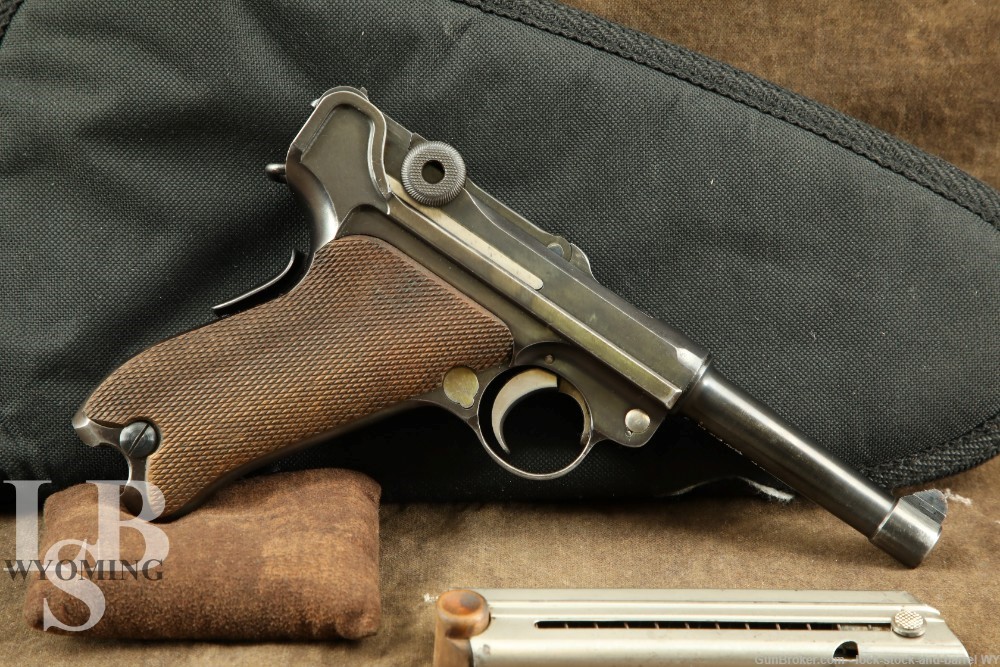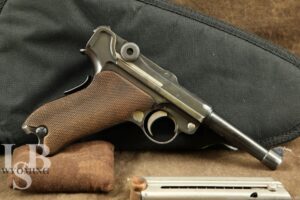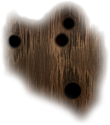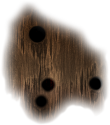
DWM / Vickers Dutch M11 9mm Luger 1906 Pattern Pistol C&R
SOLD FOR: $2,785
WOA#: WY240213JS002
Make: DWM / Vicker’s Ltd.
Model: 1906 Pattern Luger adopted as Pistol M11 by the Netherlands Indies Army (Dutch)
Serial Number: 9299
Year of Manufacture: Sources vary. The Standard Catalog of Luger and Martens’ and de Vries’ “The Dutch Luger” indicate that these pistols were made in 1921 and 1922. Jan C. Still’s “Weimar and Early N@zi Lugers” states that production took place between 1921 and 1926. Still states that the parts were made by DWM, sent to Vickers for assembly and proofing, and then sent to Java for final assembly and finish, accounting for a wider window.
Caliber: 9mm Para
Action Type: Toggle Action Semi-Auto, Removable Magazine
Markings: The full serial number “9299” is found on the front of the frame and the bottom-rear of the barrel. The left of the breech-block, the firing pin, the rear of the firing pin retainer, the bottom of the front toggle link, back of the rear toggle link, left of the trigger, side of the grip safety and the bottom of the barrel-extension’s indexing lug are each marked “99”. The takedown lever and side plate do not have any serial marking. The left of the frame at the top-rear is marked “RUST” at the safety lever. The top of the front toggle is marked “VICKERS / LTD”. The left of the barrel extension is marked with a crowned “W” (Queen Wilhelmina). There are British proof marks on the bolt, toggles, and the bottom of the barrel. The bottom of the barrel is marked “NP”. There is no unit plate on the left side of the frame.
Barrel Length: 4”
Sights / Optics: The pistol is mounted with a blade front sight in a dovetail on the front barrel band. The rear sight is a “V” notch on the back of the rear toggle.
Stock Configuration & Condition: The grips are two-piece checkered walnut panels. The grips show moderate handling wear, with the right panel worn more than the left. There are some scattered nicks, scuffs and scratches. The checkering is well defined with lightly worn peaks. There are no cracks. The grips are in Fine overall condition as likely not original to the gun.
Type of Finish: Blued
Finish Originality: Original
Bore Condition: The bore is bright and the rifling is sharp. There is no erosion. In this writer’s opinion the bore rates 10/10.
Overall Condition: This pistol retains about 85% of its metal finish. The balance is mostly in scattered light surface oxidation and minor erosion. There is some scattered light wear and edge thinning, most notable on the trigger guard, takedown lever and sideplate. There are some scattered light nicks and scuffs. The action shows operational wear and there is handling wear on the controls. The screw heads are tool marked with serviceable slots. The markings are clear. This pistol rates in about Fine overall condition for C&R.
Mechanics: The action works correctly. The barrel extension has no play to the frame. We have not fired this pistol. As with all used firearms, a thorough cleaning may be necessary to meet your maintenance standards.
Box, Paperwork & Accessories: None.
Our Assessment: The Luger (Pistole Parabellum) is perhaps the most aesthetically and ergonomically pleasing of all autoloading centerfire pistols. It is also one of the strongest, most accurate and most recognizable service pistols ever made. Georg Luger developed his famous pistol in 1898-1899 (starting with the Borchardt/Luger transitional pistol). The Luger is, essentially, a much improved Borchardt type pistol, which was itself based on the toggle action concept used by Sir Hiram Maxim in the world’s first practical machine gun. The pistols were made for decades by a few different manufacturers and saw service with a number of countries as well as great commercial success. After the Great War, the Treaty of Versailles placed restrictions on DWM’s production of military pistols. To circumvent these restrictions, in order to complete the order from the Dutch, DWM produced parts for these pistols which were then shipped to Vickers in England who assembled and proofed the pistols. They were then shipped to Java for final assembly and finished for service with the Dutch forces there. Please see our photos and good luck on your bid! – L.S.



